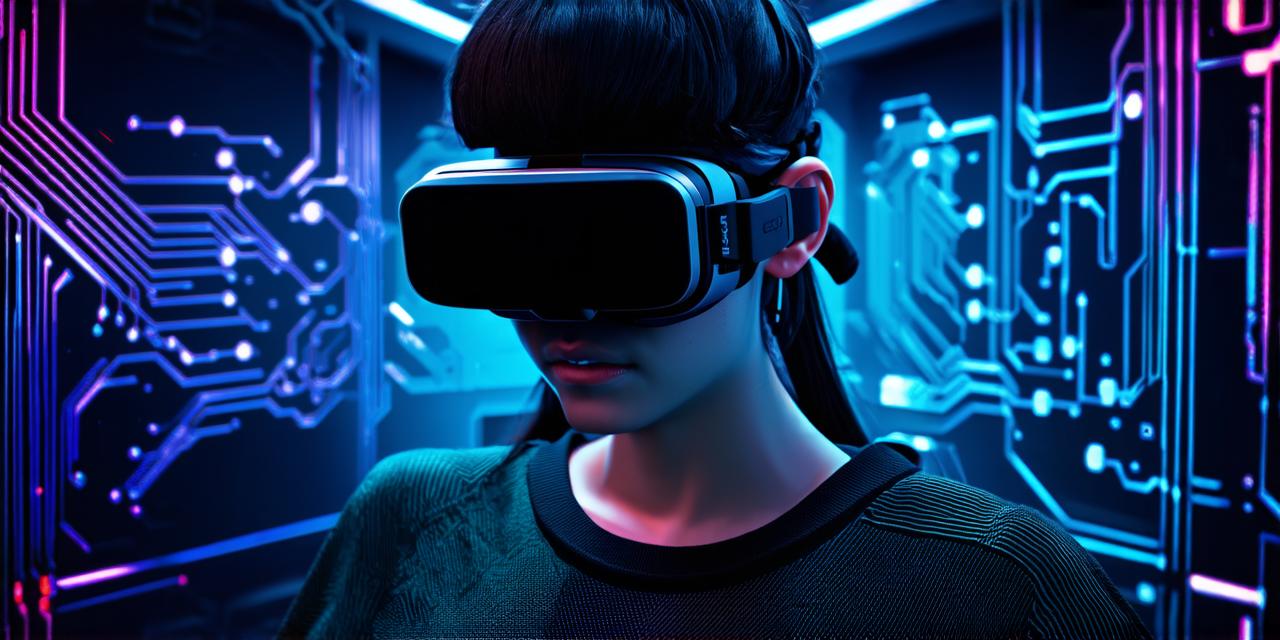What is Virtual Reality?
Virtual reality technology involves a head-mounted display (HMD) that tracks user movement and provides a 360-degree view of a virtual environment. This immersive experience can be used for various purposes, including gaming, training, education, and therapy. VR technology has the potential to revolutionize various industries, but it requires careful evaluation to ensure it meets the intended requirements.
The Evaluation Process
Evaluating VR experiences involves several steps, from defining goals to testing and refining the experience. In this section, we will outline the key steps involved in evaluating virtual reality.
1. Define Goals and Objectives
The first step in evaluating VR experiences is to define the goals and objectives of the experience. This involves identifying what the user should achieve or learn from the experience. For example, if the goal is to train pilots, the objective may be to improve their ability to navigate through a complex environment. Defining clear goals and objectives will help guide the development process and ensure that the final product meets the intended requirements.
2. Choose the Right VR Technology
Once you have defined your goals and objectives, the next step is to choose the right VR technology. This involves selecting the appropriate hardware and software for your needs. For example, if your goal is to create a highly immersive experience, you may want to consider using a high-end HMD with advanced tracking capabilities. On the other hand, if your goal is to create a cost-effective solution, you may opt for a lower-end device.
3. Develop a Prototype
With your goals and objectives defined and your VR technology selected, it’s time to develop a prototype. This involves creating a basic version of the experience that can be tested and refined. A prototype can be used to gather feedback from users, identify areas for improvement, and make necessary changes before launching the final product.
4. Test and Refine the Experience
Once you have developed a prototype, it’s time to test and refine the experience. This involves gathering feedback from users, analyzing data, and making necessary changes based on the results. User testing can provide valuable insights into how the experience is perceived and identify areas for improvement. Analyzing data such as user engagement and completion rates can also help optimize the experience for better results.
5. Launch and Evaluate
After refining the experience, it’s time to launch it and start evaluating its success. This involves tracking key metrics such as user engagement, completion rates, and feedback from users. Regularly analyzing this data can help identify areas for improvement and optimize the experience further.
Case Studies in Virtual Reality Evaluation
Now that we’ve explored the evaluation process let’s look at some real-life examples of how virtual reality has been evaluated in different industries.
Gaming Industry
In the gaming industry, VR experiences are often evaluated based on user engagement and completion rates. For example, a study conducted by researchers at the University of Oxford found that VR gaming experiences were more immersive and enjoyable than traditional 2D gaming experiences. Additionally, VR games have been shown to improve hand-eye coordination, reaction time, and overall cognitive abilities.
Training Industry
The training industry has also benefited from virtual reality technology. VR experiences can simulate real-world scenarios, allowing users to practice skills in a safe and controlled environment. For example, the military has used VR simulations to train soldiers for combat situations, and healthcare professionals have used VR simulations to practice surgical procedures.
Education Industry
Virtual reality technology has also been used in education to create immersive learning experiences. For example, a study conducted by researchers at the University of Illinois found that students who learned through VR simulations had better retention and understanding of the material compared to those who learned through traditional methods. Additionally, VR experiences can be customized to meet individual learning needs, making them an ideal tool for personalized education.
Therapy Industry
Virtual reality technology has also been used in therapy to treat various conditions such as anxiety, depression, and PTSD. For example, a study conducted by researchers at the University of Southern California found that VR exposure therapy was effective in reducing anxiety symptoms in patients with PTSD. Additionally, VR experiences can be customized to meet individual needs, making them an ideal tool for personalized therapy.
Expert Opinions
According to Dr. David Emmelkamp, a professor of virtual reality at the University of Groningen, “Virtual reality technology has the potential to revolutionize many industries, but it requires careful evaluation to ensure it meets the intended requirements.” He emphasizes the importance of defining clear goals and objectives, choosing the right VR technology, and gathering feedback from users to optimize the experience.
Summary
In conclusion, evaluating virtual reality experiences involves several key steps, including defining goals and objectives, choosing the right VR technology, developing a prototype, testing and refining the experience, and launching and evaluating the final product. Virtual reality technology has already been used in various industries such as gaming, training, education, and therapy, and has shown to be effective in improving user engagement, cognitive abilities, retention, and reducing anxiety symptoms. As VR technology continues to evolve, careful evaluation will be crucial in ensuring it meets the intended requirements and provides the best possible experience for users.
